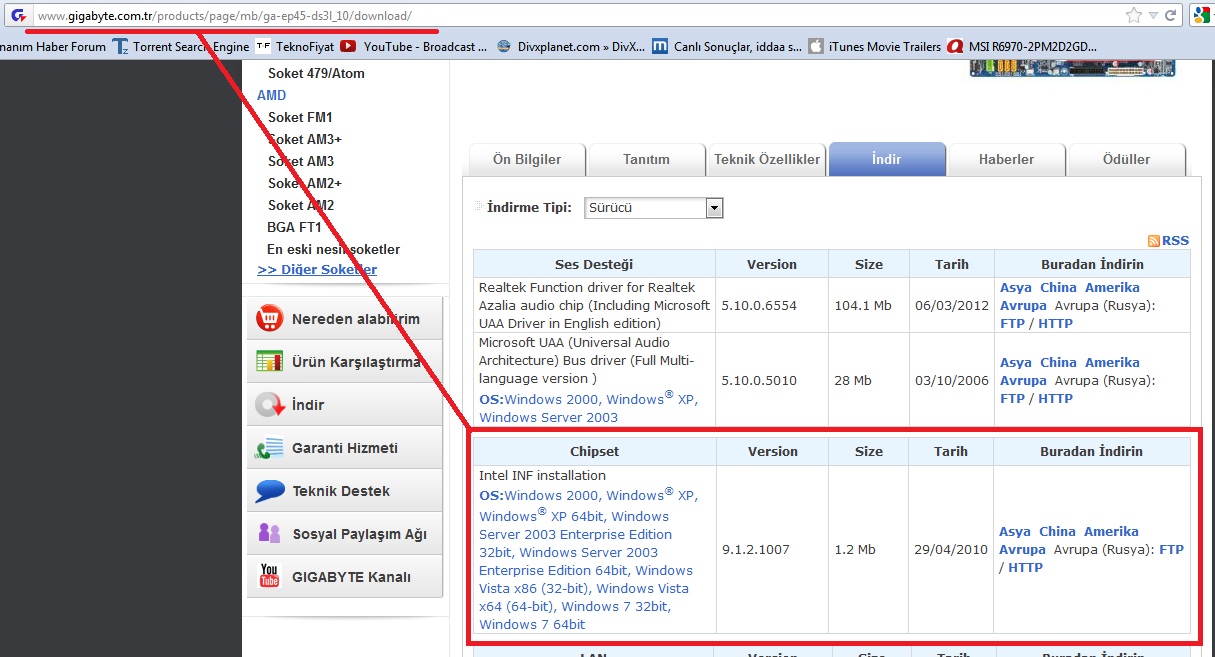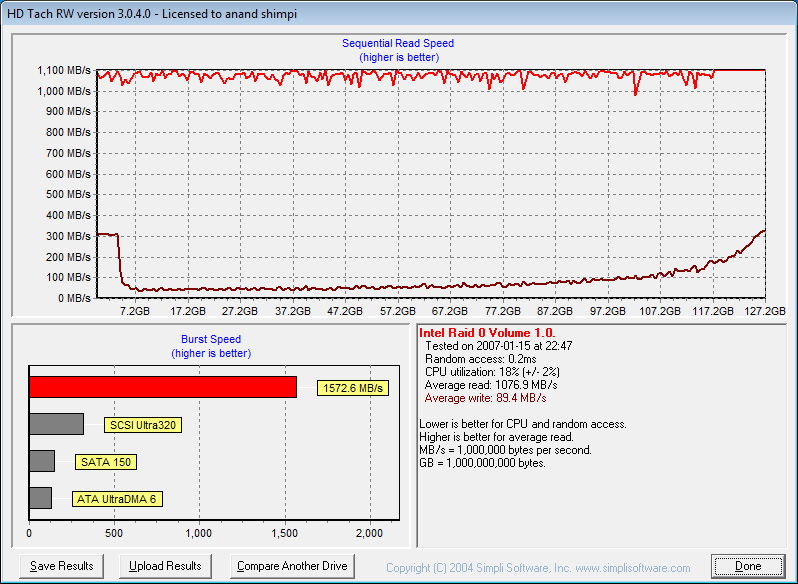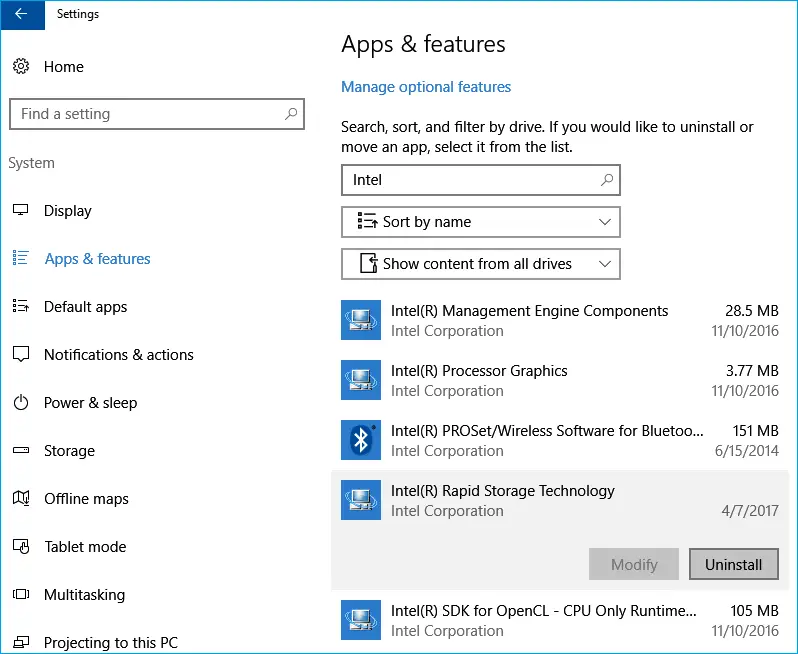Intel Rst 10 Series Drivers For Mac
Good Evening all, I am attempting to get info that seems to be quite a popular topic in the past although i haven't seen much content specifically related to the newer P51/P71 machines. I am also aware of the solution for custom image builds that contain the drivers. Can someone please point me in the direction of the driver file or.inf itself so that i can load this on my USB and use a clean Windows image, then just point the Windows install directly at the USB with the inf?
I have 2 - 960 Pro drives set up in a Raid 1 config, and i have already set the size at the Samsung recommend 10% less than full capacity. Thanks in advance, any and all help will be appreciated. Ok - I tried extracting the Lenovo drivers from the install file - No success. I then went to the Intel site and downloaded the latest driver file for RST and i successfully extracted the inf's from a cab within the install package. I copied all the inf files to a sub-directory on my USB drive and I then placed my P51 into legacy mode -, rebooted, and I thus far pointed the driver to the inf files and a series of misc Intel drivers populated. I Selected the first one and it allowed me to select the Raid 1 partition and i was able to allow windows to create its emergency partions and continue with the installation. I will continue to post my progress.
If anyone wants the INF files - They are attached here - in a inf.zip. I have now successfully connected to the internet and am currently downloading drivers. I guess the rest is history. If anything unusual happens I will update. Moderator note: post rescued from forum's automated filters.
Wrote: Ok - I tried extracting the Lenovo drivers from the install file - No success. I then went to the Intel site and downloaded the latest driver file for RST and i successfully extracted the inf's from a cab within the install package. I copied all the inf files to a sub-directory on my USB drive and I then placed my P51 into legacy mode -, rebooted, and I thus far pointed the driver to the inf files and a series of misc Intel drivers populated. I Selected the first one and it allowed me to select the Raid 1 partition and i was able to allow windows to create its emergency partions and continue with the installation.
I will continue to post my progress. If anyone wants the INF files - They are attached here - in a inf.zip. I have now successfully connected to the internet and am currently downloading drivers. I guess the rest is history. If anything unusual happens I will update. Thank you GTgamo! I could not extract the driver from the Lenovo install file either, and I've spend the past few days wasting a ton of time trying to get my P51 working again after the BIOS update to 1.15 killed my RAID 1 configuration and, thus, my system.
To summarize: Received new P51 configured in RAID1 (2@ 500GB NVMe SSDs) several weeks ago and it had bios version 1.14. Within a couple hours of booting it, I downloaded and read the guide. I also installed System Update which indicated that 1.15 was available. Since I had essentially just turned on the computer and had not yet begun to configure anything else on it, I decided to update the bios. When it rebooted, it started.but. RAID was gone, and replaced with 2 500GB drives.
Interestingly, it booted even though it had copies of Windows, User, Program Files, etc. On both drives. I was perturbed at losing RAID, so I entered bios, reinitialized RAID1, and after that everything was gone. But worse yet, with RAID1 defined, I was not able to access the drives at all with an older bootable key that I had laying around. Since I had not created recovery media, I obtained the P51/P71 recovery key from Lenovo, but it would not access the drives. I also restored 1.14, but that didn't help so I reinstalled 1.15. Eventually I removed RAID and was able to access the drives and install Windows, but I wanted RAID so I kept fighting it.
Ultimately, a couple weeks later, I found your post, obtained the iaStorAc.xxx files, created a Win10 bootable usb key using Rufus, reinitialized RAID1, and tried to install Win10. In summary, Lenovo's P51/P71 restoration key STILL is a.failure. for a P51 system with RAID. And in regard to your question, I only know that upgrading from 1.14 to 1.15 coincided with my system losing its RAID1 configuration.
And since I spent many days trying to get the system working, I am not interested in doing any futher testing to see if I can replicate what happened.


Intel Rapid Storage Technology (RST) drivers and Support for Disk Drives Beyond 2.2 TeraBytes (TB) Besides the CPU, many computer systems utilize special Intel chipsets that handle the I/O from the disk drives. Depending on your system hardware, Windows operating systems may be using Intel device Rapid Storage Technology (RST) drivers which are common. Alternative Microsoft Windows drivers are also commonly used. Like other kinds of software, the Intel RST drivers are updated to keep pace with new technology. The Intel drivers found in retail releases of Windows 7 have a 2.2TB limitation. Rather than cut off the capacity at 2.2TB, the limitation expresses itself as the remainder above 2.2TB.
In other words, the driver causes the Windows operating to see a 3TB drive as 746.52 GiB (or 800GB). If this is the case, then updating the driver should allow Windows to detect the drive as 3TB. For disk drives beyond 2.2TB, the proper level of Intel RST driver should be v10.1 or higher. If your system uses an earlier version you can update the driver by following the update instruction on the. The Intel support website has tools that automatically check Intel device drivers.
You can check manually to see which disk drivers your system uses. Right-click on Computer. Select Manage. Select the Device Manager from the list on the left. Expand the IDE ATA/ATAPI Controllers branch of the system tree. Double-click on the Intel SATA Controller line. For example: Seagate DiscWizard Setup has a check for the presence and use of the Intel drivers.
Intel Rst 10 Series Drivers For Mac

If the driver version is less than v10.1 and the system detects a disk driver larger than 2.2TB then the setup will halt with this message: Please download the latest version of Intel Rapid Storage Technology driver before installing Seagate DiscWizard. It is possible for the Intel driver to hide the 3TB drive so completely from Windows that DiscWizard does not realize the system has a drive larger than 2.2TB. In this situation you may see a message like this: Other related topics with Intel drivers and 2.2TB limitations:.
Intel RAID does not yet support disk drives greater than 2.2TB. DiscWizard does not support Extended Capacity volumes above 2.2TB in systems with Intel RAID in use on other drives.
Intel Rst Driver Win 10
Product support for disk drives greater than 2.2TB is rapidly evolving. Please contact your suppliers directly for the latest status and capacity support limitations of their products.
Intel Rst 10 Series Drivers For Mac 2017
If you find that any part of this information is out of date or lacking, please let us know so that we may correct it and better serve future readers.